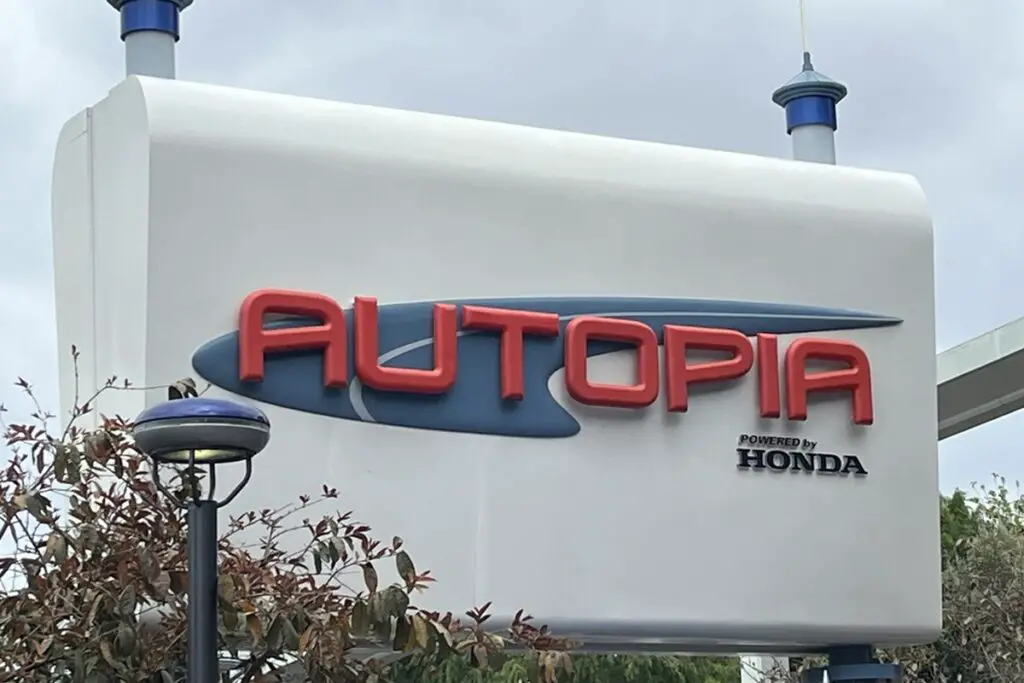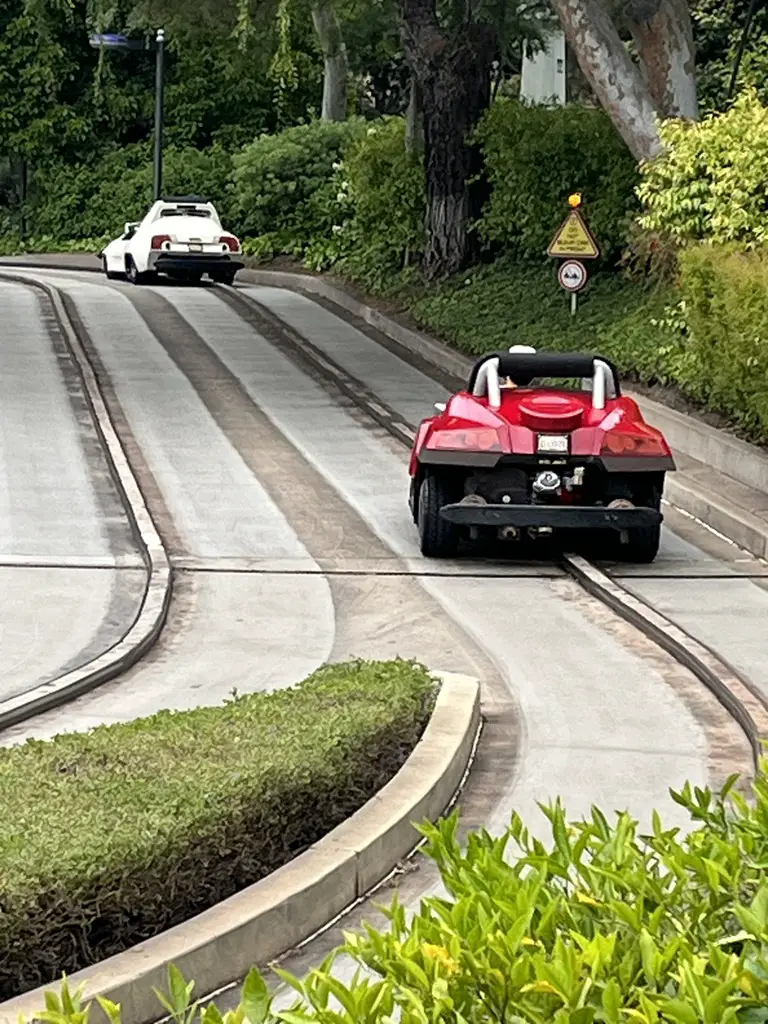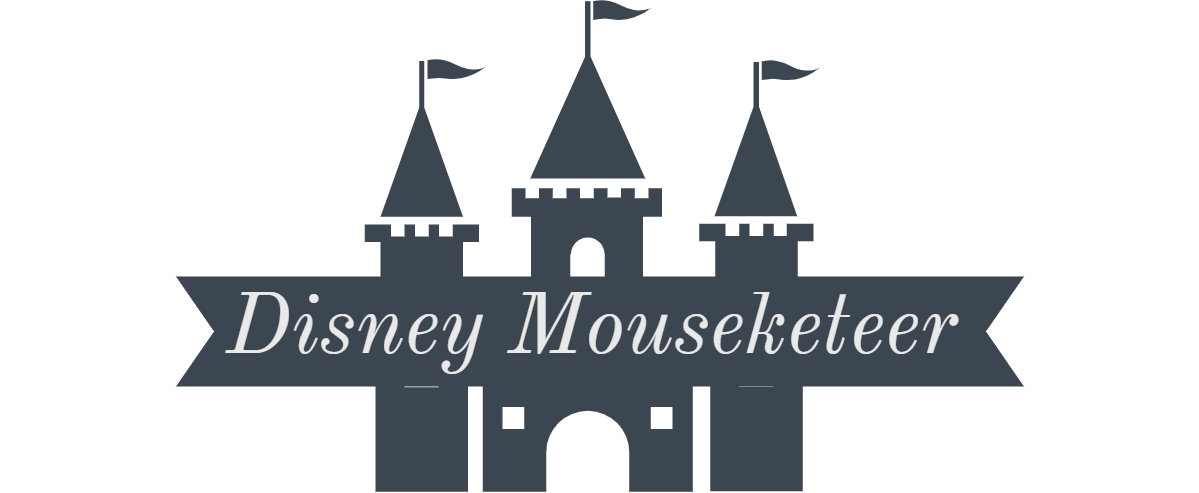Evolution of Disneyland’s Autopia
Walt Disney’s vision for futuristic vehicles transformed into a new experience when Autopia first opened with Disneyland park in 1955. The original fleet of vehicles, designed by Imagineer Bob Gurr, featured cars powered by 7.5-horsepower Mustang motorcycle engines. The experience of Autopia was to give guests a chance to navigate the open roads and experience driving on the “freeway” which was latest transportation innovation at the time.
But, the attraction’s initial design faced several challenges. Enthusiastic drivers caused frequent collisions which prompted overhauls including the addition of bumpers to absorb impacts and reduce maintenance demands. Plus Autopia did not have guide rails for the vehicles which created challenges for the attraction since it’s opening day. So, in late 1964, a railing system was added to the attraction to keep the cars “on track”. Several new vehicle models were introduced between 1955 and 1967 that were nearly identical to the original vehicles but with better durability.
Fantasyland Autopia
A second Autopia attraction opened in Fantasyland on January 1, 1959 to take some of the pressure off the Tomorrowland Autopia, which always had a long line. The main difference between the Fantasyland and Tomorrowland Autopia tracks were that guests saw different scenery on their ride. In March 1991, the Fantasyland Autopia became Rescue Rangers Raceway through November 1991. Then in September 1999, the Fantasyland Autopia closed and the track was combined with the Tomorrowland Autopia to make one large attraction that opened in 2000.
In 1999, the sponsorship changed to Chevron and the Autopia cars took on a cartoonish design. Autopia collectibles were sold at Disneyland merchandise shops that resembled the cartoonish design.

In April 2016, Honda became the new sponsor of Autopia and the track was enhanced with animated depictions promoting clean energy. Part of the Honda sponsorship included replacing the old vehicle engines with Honda’s 8.5 horsepower iGX270 units which were quieter and cleaner, but still gave off strong fumes. However, last month (April 2024), Disneyland announced that the Autopia vehicles will be switched to electric vehicles by 2026.


Cultural Impact and Reception
Over the decades, Autopia has attracted and mirrored the whimsy and practicality of its global audience, adapting to societal changes. The attraction nurtured automotive enchantment among young guests, offering an introduction to the ideals of freedom and mobility associated with driving. It engraved a unique niche in popular consciousness as countless young drivers honed their formative motoring skills.
Responding to environmental concerns and consumer appetites for sustainability, Autopia’s journey into electric propulsion echoes Disney’s commitment to reducing its ecological footprint. This pivot reflects cultural shifts towards more sustainable lifestyles, future-proofing this original Disneyland attraction. The shift to electric cars, slated in alignment with automotive trends and activism for cleaner energies, underscores a conscious adaptability.
Other Disneyland Attractions
Learn more about other Disneyland attractions by reading these blog posts:
- Unlock the Magic: Explore Disneyland Guided Tours for Unforgettable Adventures
- San Fransokyo Square at Disney California Adventure Park
- The Animation Academy in Disney California Adventure Park
- The Little Mermaid – Ariel’s Undersea Adventure at Disney California Adventure Park
As always, I’ll “see ya real soon”, Mouseketeers!








